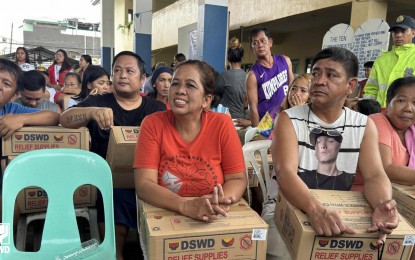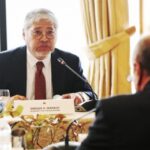MANILA – The Department of Social Welfare and Development (DSWD) is focusing its efforts on providing immediate food assistance to families and individuals affected by the series of weather disturbances in several regions in the country.
“As we all know, whenever there is a disaster, the first thing that comes into the protocol is food—food on the table for those affected first,” a DSWD official said in a radio interview.
The official stated that the DSWD has so far released close to 830,000 boxes of family food packs (FFPs) to disaster-hit communities and aims to reach the 1.5-million mark in the coming days as requests from local authorities continue to be processed.
“That’s a significant number of family food packs we’ve already released, and we are slated to release more,” the official added.
While food relief continues, the DSWD is also in the process of identifying individuals and families eligible for financial aid as part of the recovery phase.
“We’re fine-tuning the list of those affected so that we can start working on recovery. Financial assistance is important because families have different needs—some may use it for house repairs, others for livelihood recovery,” the official explained.
Around PHP450 million is being prepared for financial aid, though this figure could increase due to the rising number of affected families.
“The number keeps increasing by the day or even by the hour. We’re looking at PHP450 million, but it might still rise as rains persist,” the official noted.
The cash assistance will be provided under the agency’s Ayuda Para sa Kapos ang Kita Program (AKAP).
The DSWD also appealed for patience from those awaiting relief as operations continue.
“We ask for understanding—food remains our priority as we are still in the relief stage. But we are already reviewing submitted lists to prepare financial assistance for recovery,” the official said.
According to the latest disaster response report, over 1.9 million households have been affected by torrential rains, with more than 31,000 families still in evacuation centers.
Barangay Poro Evacuation Center
The Barangay Poro Evacuation Center is a community facility in the Philippines designed to provide temporary shelter and safety for residents during natural disasters such as typhoons or floods. Established to address the region’s vulnerability to extreme weather, it reflects local efforts to enhance disaster preparedness and resilience. The center plays a vital role in protecting and supporting affected families in times of crisis.
San Fernando City
San Fernando City, located in La Union, Philippines, is a historic coastal city known as the “Flower Garden of the North.” Established in 1854, it became a key trading hub during Spanish colonial rule and later served as a vital port during the American period. Today, it is famous for its vibrant festivals, such as the annual “Pindangan Festival,” which celebrates its rich cultural heritage and history.
La Union
La Unión is a province in the northern Philippines, known for its rich agricultural land, coastal areas, and vibrant festivals like the *Pattaraday* (Adivay Festival), which celebrates the cultural heritage of indigenous tribes. Historically, it was part of the Ilocos Region and played a role in Spanish colonial trade. Today, it is also recognized for its surfing spots in Urbiztondo and the iconic Luna Church (Bacnotan Church), a Spanish-era heritage site.
MANILA
Manila, the capital of the Philippines, is a vibrant city with a rich history dating back to its founding in 1571 by Spanish conquistadors. It served as a key colonial hub for trade and culture during Spanish rule and later endured significant destruction in World War II. Today, it blends historic landmarks like Intramuros with modern urban life, reflecting its resilience and diverse heritage.
Department of Social Welfare and Development
The **Department of Social Welfare and Development (DSWD)** is a Philippine government agency responsible for social welfare programs and services aimed at poverty reduction, disaster response, and community development. Established in 1915 as the *Public Welfare Board* and later reorganized into its current form in 1987, the DSWD implements initiatives such as conditional cash transfers (*Pantawid Pamilyang Pilipino Program*) and support for marginalized groups. It plays a key role in promoting social protection and inclusive development across the country.
Ayuda Para sa Kapos ang Kita Program
The **Ayuda Para sa Kapos ang Kita Program** (AKAP) is a financial assistance initiative by the Philippine government to support low-income workers and families affected by economic challenges, such as inflation. Launched in 2024, it provides one-time cash aid to eligible beneficiaries, particularly those earning less than a certain threshold, to help alleviate financial burdens. The program reflects the government’s effort to address poverty and economic inequality through targeted social welfare measures.
AKAP
It appears there might be some confusion regarding “AKAP” as it does not correspond to a widely recognized place or cultural site. If you meant *Acropolis* (often associated with Athens, Greece), it is an ancient citadel dating back to the 5th century BCE, housing iconic structures like the Parthenon. If “AKAP” refers to something else, please provide additional details so I can assist accurately!






